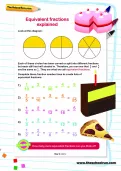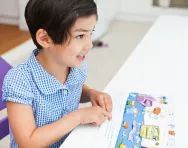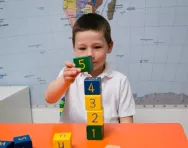Important update from TheSchoolRun
For the past 13 years, TheSchoolRun has been run by a small team of mums working from home, dedicated to providing quality educational resources to primary school parents. Unfortunately, rising supplier costs and falling revenue have made it impossible for us to continue operating, and we’ve had to make the difficult decision to close. The good news: We’ve arranged for another educational provider to take over many of our resources. These will be hosted on a new portal, where the content will be updated and expanded to support your child’s learning.
What this means for subscribers:
- Your subscription is still active, and for now, you can keep using the website as normal — just log in with your usual details to access all our articles and resources*.
- In a few months, all resources will move to the new portal. You’ll continue to have access there until your subscription ends. We’ll send you full details nearer the time.
- As a thank you for your support, we’ll also be sending you 16 primary school eBooks (worth £108.84) to download and keep.
A few changes to be aware of:
- The Learning Journey weekly email has ended, but your child’s plan will still be updated on your dashboard each Monday. Just log in to see the recommended worksheets.
- The 11+ weekly emails have now ended. We sent you all the remaining emails in the series at the end of March — please check your inbox (and spam folder) if you haven’t seen them. You can also follow the full programme here: 11+ Learning Journey.
If you have any questions, please contact us at [email protected]. Thank you for being part of our journey it’s been a privilege to support your family’s learning.
*If you need to reset your password, it will still work as usual. Please check your spam folder if the reset email doesn’t appear in your inbox.
Handy help choosing a school

The battle for school places has never been fiercer, and in some areas, the process of deciding where to send a child to school begins even before the birth.
Choosing the right school for your child is a big responsibility, not to mention a difficult task, but knowing what to take into consideration can make it less stressful.


Start a unique learning programme!
- Weekly programme for each school year
- Worksheets sent direct to your inbox
- Keeps your child's learning on track
Start by finding out how the primary school application works in England, Wales, Scotland and Northern Ireland.
The next step is to understand what you should you be looking at when you start to weigh up the pros and cons of your local schools. We asked Liz Coatman, state schools expert for the Good Schools Guide, for her insider advice.
Picking your priorities
To some extent, choosing a school for your child relies on instinct. Could you picture them at a small village school, or a bigger establishment with lots of extra-curricular activities?
Are exam results your top priority, or are you more concerned about the overall atmosphere?
'When you're choosing schools, you need to first decide what you want in a school,' says Liz. 'Factors you might want to consider include strong test results, good value added (a measure of how well children progress throughout their school journey), a good range of extra curricular activities, strong pastoral care, a particular ethnic and social mix, the size of the school, faith or non faith, wrap-around care, and the amount and quality of outdoor space.'
These criteria will be personal to each family, but it's well worth getting them straight in your mind before you start looking.
Cut through the stats
Whether you're looking at primary or secondary schools, you're likely to use school league tables and Ofsted reports as key sources of information. There are several places where you can look at league tables:
- The Telegraph's primary school league tables
- Department for Education performance tables: these are updated every December
- The Good Schools Guide: statistical data on all of the UK's schools, plus detailed reports on many
You can access the most recent Ofsted reports either on a school's own website or on Ofsted's site. 'It's also worth Googling the names of your shortlisted schools for any local or national newspaper articles, which could give you some useful insights,' says Liz.
But while it's important to look at league tables and Ofsted reports, they aren't the only thing to consider: high grade averages and a convenient setting don't always equate to the ideal school for your child. Ofsted reports may be old, and a school's character can change dramatically in a short space of time – for example, if there is a change of senior management – and academic statistics from the previous year are of little use if half the teachers who helped the pupils to achieve those grades have now moved on, or if it was a school year with a high proportion of children with special educational needs. That's why it's essential to visit all of the schools on your shortlist and gain an overall impression that goes beyond facts and figures.
Deciding which schools to visit
Visiting schools is time-consuming, so do a bit of research before you decide which ones you're going to check out. 'You need to be realistic about which schools you have a chance of getting a place at,' advises Liz. 'This involves checking the school's admissions policy (e.g. are there church attendance requirements to get priority?) and information about allocations for the previous year, which is obtainable from the local authority's Admissions Guide for Parents: a useful indication of how close you need to live to the school to be in with a chance of a place.' Bear in mind that admissions policies can change, so you need to check the details for each school, each year.
FindASchool is a free tool which lists admissions citeria to help parents research their chances of getting a place at the school of their choice.
On your application form, you can list three to six schools, depending on where in the country you live. 'You should always include a school close to you somewhere on your list, even if it is not the one you really want, as if you fail to get any of the schools on your list, you will be offered the nearest school with a vacancy, which could well be a very undesirable one,' Liz says. 'Once you've done all your research, you should be able to form a short list of around six schools to visit.'
Visiting schools
Most schools run open days or evenings for prospective parents, where they go to great lengths to sell themselves. However, Liz recommends looking around during a normal school day if possible, too. 'Going during a school day means you can see children in class,' she explains. 'Do they look engaged and happy? What is behaviour like between lessons and in the breaks?'
When you're doing the rounds of open days, ask yourself:
- Are the events well run?
- Does the school match up with the prospectus?
- Are children used to show parents round?
- Does the school look well looked after, e.g. is the paintwork fresh? Try to visit a children's toilet; is it clean and well kept?
- Is the work on display well presented, with a range of abilities represented?
- What are your impressions of the head? Do they do any teaching? Do they know children by name and have a naturally friendly manner with them?
- How do the teachers relate to the children and to your child?
- What evidence is there of how the school caters for special educational needs and gifted and talented children?
- What sort of extra-curricular activities are offered?
- What is the school's ethos?
- What's your impression of the general atmosphere?
If you have the opportunity to talk to teachers, Liz suggests asking:
- How big are the classes?
- How many classroom assistants are there?
- Are children taught in sets? If so, can children move sets easily if necessary?
- How are gifted children extended and challenged?
- How are children with additional needs helped?
- How do they communicate with parents if there is a problem?
- How often are supply teachers used?
- Is there much staff turnover?
- Would they send their own child to the school?
During secondary school open days, you may be shown around by a current pupil. 'If so, ask they what they think of their teachers and the head,' Liz advises. 'Do they enjoy lessons? Is there any bullying? What's the food like? Are they proud of their school?'
Other parents' views
Alongside scouring the league tables and Ofsted reports and visiting schools for yourself, try to canvass the opinions of other parents. ‘If you ask any parent how they chose their child's school or deal with issues such as bulling or dyslexia, they will tell you that the advice of other parents is their most trusted source,’ says Greg Hadfield, founder of Schoolsnet, which published reviews of schools written by real parents.
'It's a good idea to talk to anyone you know who has or has recently had children at the school,' agrees Liz. 'Visit the school just before the end of the school day – which is informative in itself, as you can see how the children behave – and chat to parents waiting to collect their children. Mumsnet is another good source of information, and the Good Schools Guide's writers consult other parents as part of writing their reports. You can also look at the Parent View section of Ofsted's website to find out how parents answered 10 key questions in an online survey.'
The Good Schools Guide is the most trusted guide to schools in the UK, helping parents choose the best education for their children.








